Karyoubinga is a celestial being who plays music, dances, sings and flies through the air. She appears in many forms, often with a bird's body and an angelic head. She is depicted in Buddhist paintings, ritual robes, murals, and temple decorations.
The artist, Mr. Koichiro Okazaki, has received prestigious recognition for his work and has been accepted by and awarded in national art exhibitions. Known through his work name as Kogaku-san, his art is admired and collected by lovers of maki-e and investors world-wide.
Kogaku-san draws his inspiration of this particular Karyoubinga from treasures housed in the Shosoin Temple. Shosoin is an imperial storehouse. The building serves as a time capsule, housing the treasures of the Silk Road and is located inside the Todaiji Temple in Nara just Northwest of the Great Buddha. This Temple has protected and preserved around 9,000 different items dating back to the 7th and 8th centuries. Shosoin's significance extends beyond Japan and the building is widely acknowledged as the "Treasure House of the World".
Kogaku-san's rendition of the Karyoubinga from the Shosoin Temple is an imaginary creature with the head of a beautiful woman and body from an exotic bird. Karyoubinga lives on the snowy mountains in the Himalaya region and in the Paradise, spending most of her time teaching and dancing, possessing a melodious voice.
To successfully depict this much loved design, Kogaku-san employs a wide range of many different methods of Maki-e art and techniques: Bokashi maki-e (a shading technique in which two kinds of gold powder are graduated through bamboo. It takes a very steady hand to sprinkle solid gold dust on to wet Urushi lacquer), Hirame Ishimeji (large gold foils sprinkled over the wet Urushi lacquer and then a transparent Urushi lacquer is applied and burnished), Togidashi maki-e (a labour-intensive technique that results in a design completely flush with the surface, utilising the repetition of paintings, powder sprinkling, and burnishing), Tsukegaki technique (using heavier raised lines of gold lacquer, dusted with different size of gold powder to give texture and definition to the design), Kirigane (decorative technique employing small squares of gold or silver foil applied to maki-e lacquerwork surfaces of gold foil and abalone and gold powder applied to maki-e lacquerwork surfaces). A clear orange colour natural Urushi lacquer is painted on the design to secure its finish and durability for the owner to enjoy for many, many decades.
The Conway Stewart Karyoubinga brings a wonderful traditional interpretation of an important figure from Buddhism into our modern world. Set against a backdrop of shimmering gold powder on the cap, the figure of Karyoubinga evokes feelings of lightness and harmony, perfectly in keeping with the theme. This sense of calm and soothing peace is carried through the barrel of the pen, birds and a floral motif provide a complimentary backdrop to the central figure.
The beauty of Maki-e depends on the artisan's skills: artistic design, knowledge of traditional techniques, and the ability to tell a story through the application of art. Many sought-after artisans acquire their training in their early teenage years, following in the footsteps of their parents and grandparents. A Maki-e artist's vocation is not motivated by money, but by pride in following a family tradition.
Each piece carries Kogaku-san's signature, and the coveted Red Seal signature signifying the highest level of Maki-e art.
ARCHIVE
Karyoubinga, Celestial Maidens, 2007
Maki-e Collection
"Nominee in the 2008 Pen WorldReader's Choice Awards -- Best Maki-e Artistry"
The pen exhibiting the best Maki-e artistry; Maki-e encompasses a number of lacquer-working techniques originating in Asia
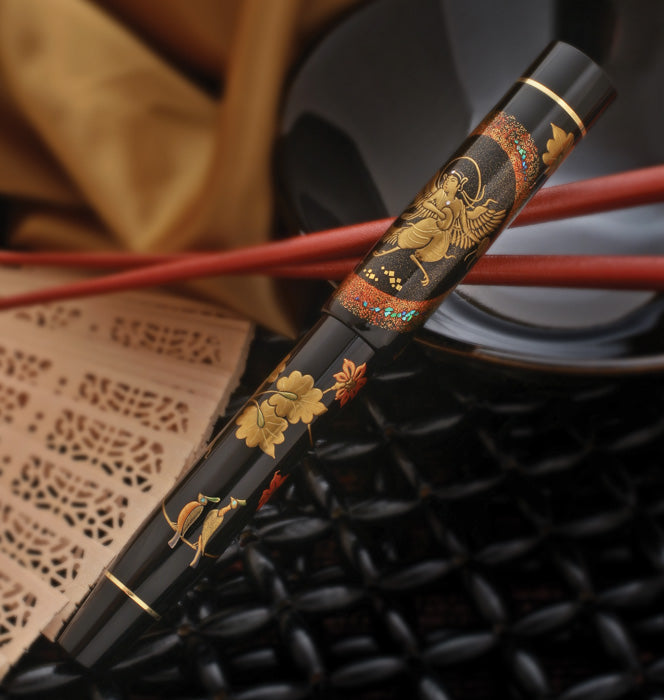
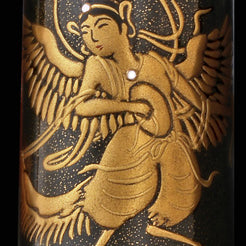
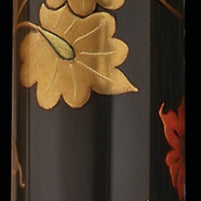
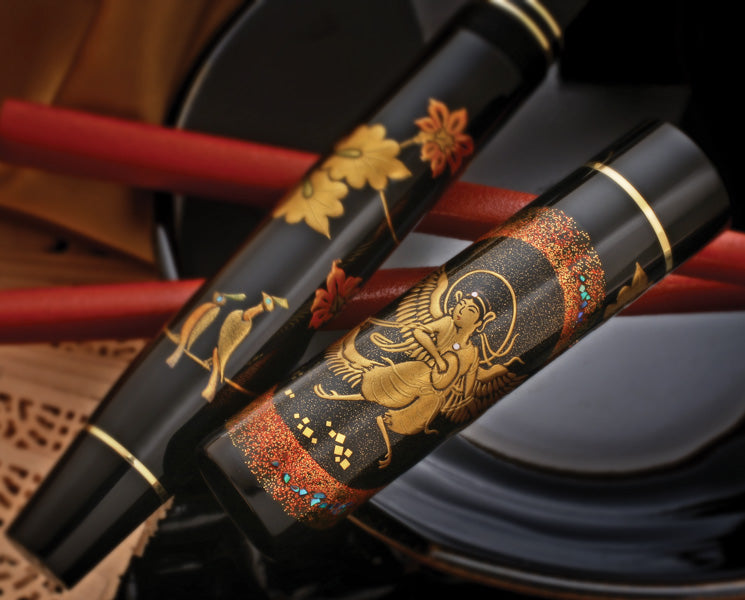
Archive Blog Posts
WES Journal edition #126, Winter 2023
Spotlight on Conway Stewart Originally published in WES Journal 126, pp 26-29, 2023
The History of Conway Stewart
The Beginning In 1905, Mr. Frank Jarvis and Mr. Tommy Garner formed Conway Stewart & Co. Limited at 13 Paternoster Row LondonEC1, next to St Paul’s Cathedral in London. Today,...
Conway Stewart 'Babbage'
Charles Babbage is popularly known as the “Father of Computing” for his pioneering work with computing machines. The use of Jacquard punch cards, chains and subassemblies, and the logical structure...
Conway Stewart Evergreen Sterling Silver Duro Special Edition
SOLD OUT! Retail List Price Fountain Pen or Roller Ball — £599 $970 €630 Welcome to our February 2010 Special Edition — the Conway Stewart Evergreen. Based on our popular Sterling Silver Duro model,...
The Balmoral
Following the success of our Windsor, which was inspired by the ornate decoration gracing the creations of English gunsmiths, Conway Stewart is pleased to announce the second in this prestigious...
Conway Stewart Cavendish Edition
Conway Stewart is proud to announce our new model in English hallmarked solid sterling silver, the Cavendish. A bold stylish design that brings together a traditional shape with a crisp...
Conway Stewart 'Elizabeth Garrett Anderson' Limited Edition
Elizabeth Garrett Anderson is regarded as England’s first female doctor; a pioneer in educating women in medicine; a strong supporter of women’s suffrage and opportunities in higher education, as well...
The Wellington Series
Arthur Wesley was born in Dublin in 1769. In 1798, his aristocratic Anglo-Irish family changed their name to Wellesley. In honour of Sir Arthur Wellesley, Conway Stewart commemorates the Duke...
Professional Series - Doctor's & Lawyer's Edition
The new Conway Stewart Professional Series is designed to reflect the dedication and life’s work of individual professional fields. These striking new designs are crafted of gleaming black resin and...
Kipling 'IF' Special Edition
The new Special Edition from Conway Stewart is inspired by one of the most important literary figures in English history. At first glance this pen looks like it has a...
Conway Stewart Belliver Series
The new Belliver model from Conway Stewart is a return to the finest traditions of CS heritage, rooted in attention to detail, a perfect size and weight, as well as...
Conway Stewart Montague and Capulet Series II
The 2013 Montague and Capulet series from Conway Stewart celebrates the principal characters of Shakespeare’s eternal classic Romeo and Juliet, bringing a graceful and elegant slim design to life in...
Excalibur Limited Edition
Conway Stewart is pleased to announce the latest new colour on the popular Churchill model — Excalibur with hallmarked solid sterling silver trim. The Churchill Excalibur hand made resin consists of a...
Conway Stewart Edwardian Limited Edition
Conway Stewart is proud to present our new limited edition sterling silver series, ‘The Edwardian’. Based on our popular Belgravia model, the Edwardian is completely crafted from solid sterling silver...
Conway Stewart Gatsby Limited Edition
“Nominee in the 2014 Pen World Reader’s Choice Awards — Best Cultural or Historical Theme” During the classic era of the 1920s, a fine fountain pen was considered not just a luxury,...
60th Anniversary 100 Series Special Edition - Pistachio
60th Anniversary Celebration! The 100 Series was first launched in 1954 and was quick to become one of the most popular Oversize pens ever made by Conway Stewart. In celebration...
Marlborough Vintage Limited Edition Pens
The Conway Stewart Marlborough Vintage Limited Edition is a distinguished new design, that is inspired by the classic styling of our vintage models and created with our present day manufacturing...
Jaguar Limited Edition
The Conway Stewart Jaguar is a new finish to compliment our sold out Elegance Aztec limited edition. Each pen from the Elegance range has a unique design and is produced...
Conway Stewart Collectors Club - Celebration Pen & Book Special
Offered only to members of our Collectors Club, Conway Stewart is making available the Celebration pens accompanied by a hardback copy of the new book, Fountain Pens for the Million — The...
Conway Stewart Collectors Club - Churchill Carbon Fibre
Conway Stewart is making available exclusively to members of the Collectors Club our award-winning Churchill model with hand wrapped Carbon Fibre overlay covering the cap and barrel. Each pen is...

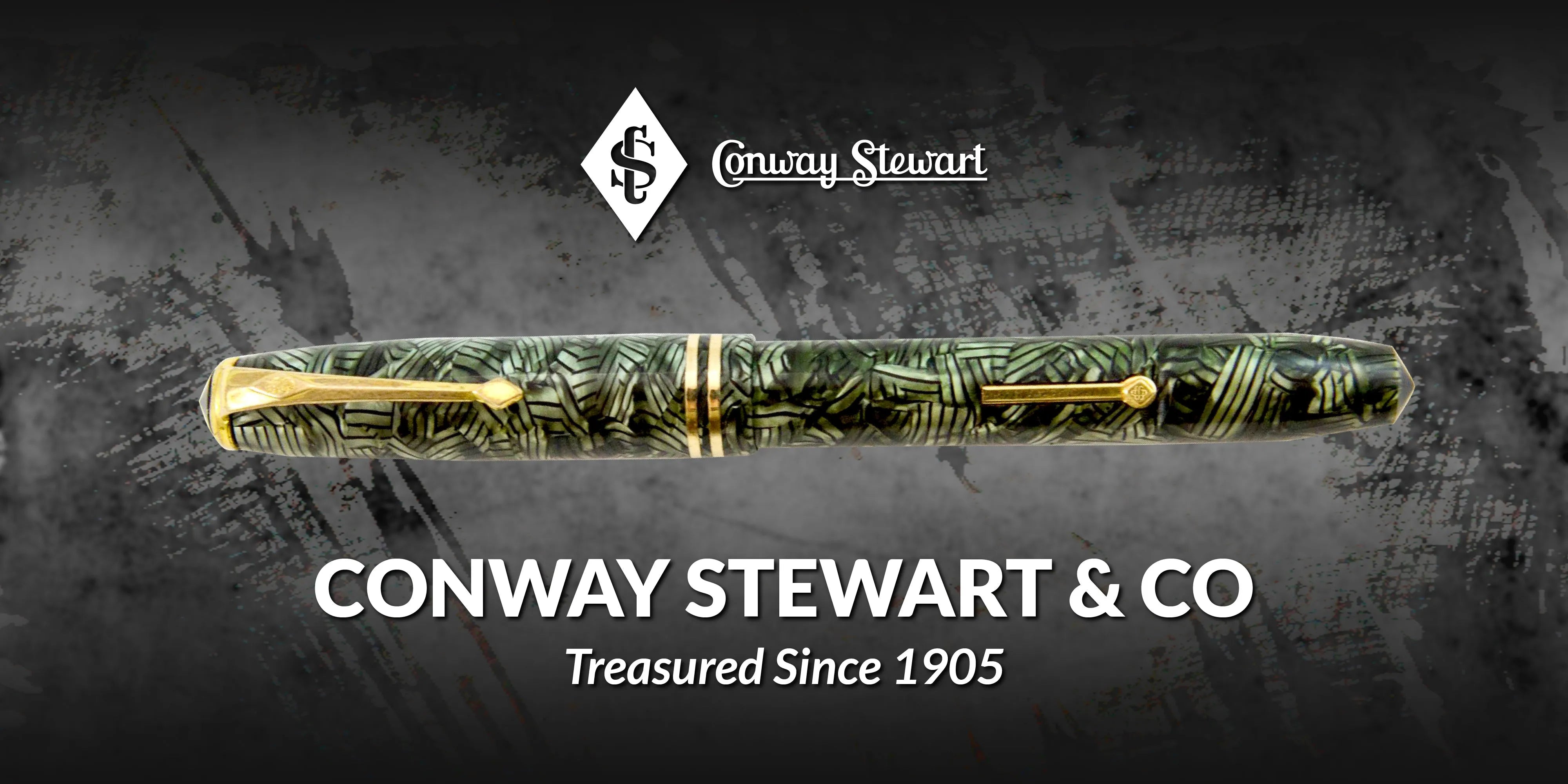
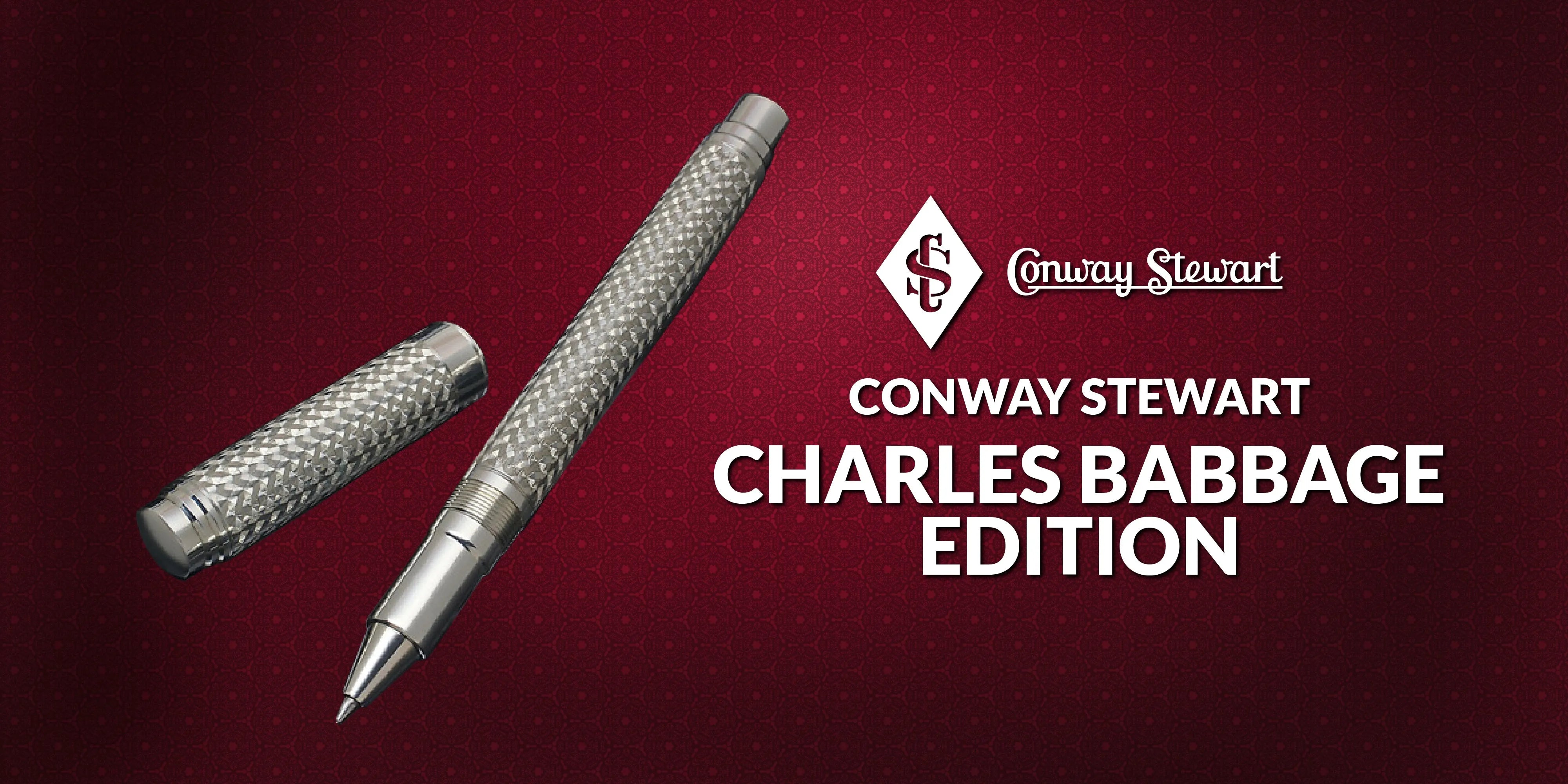



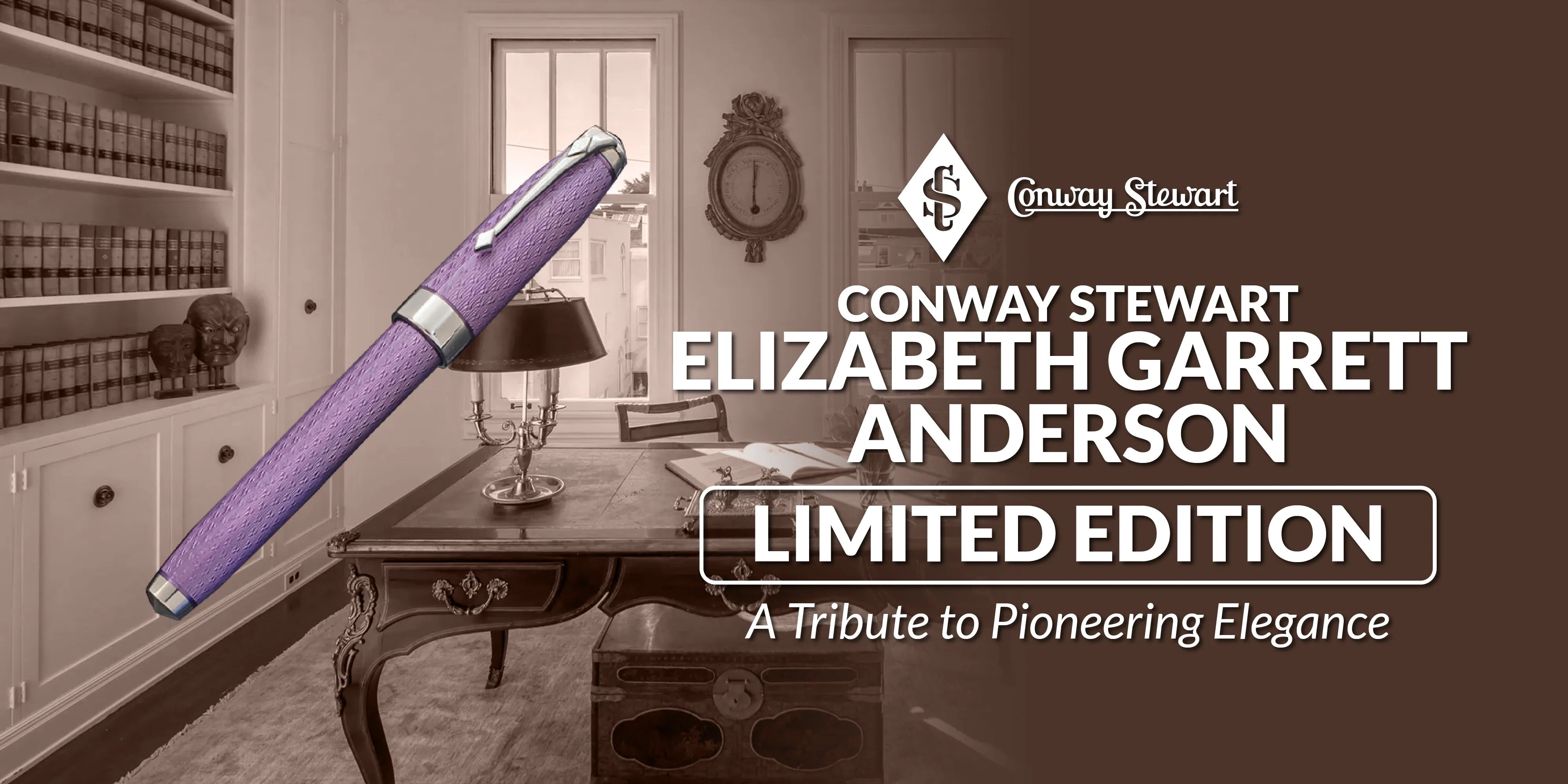


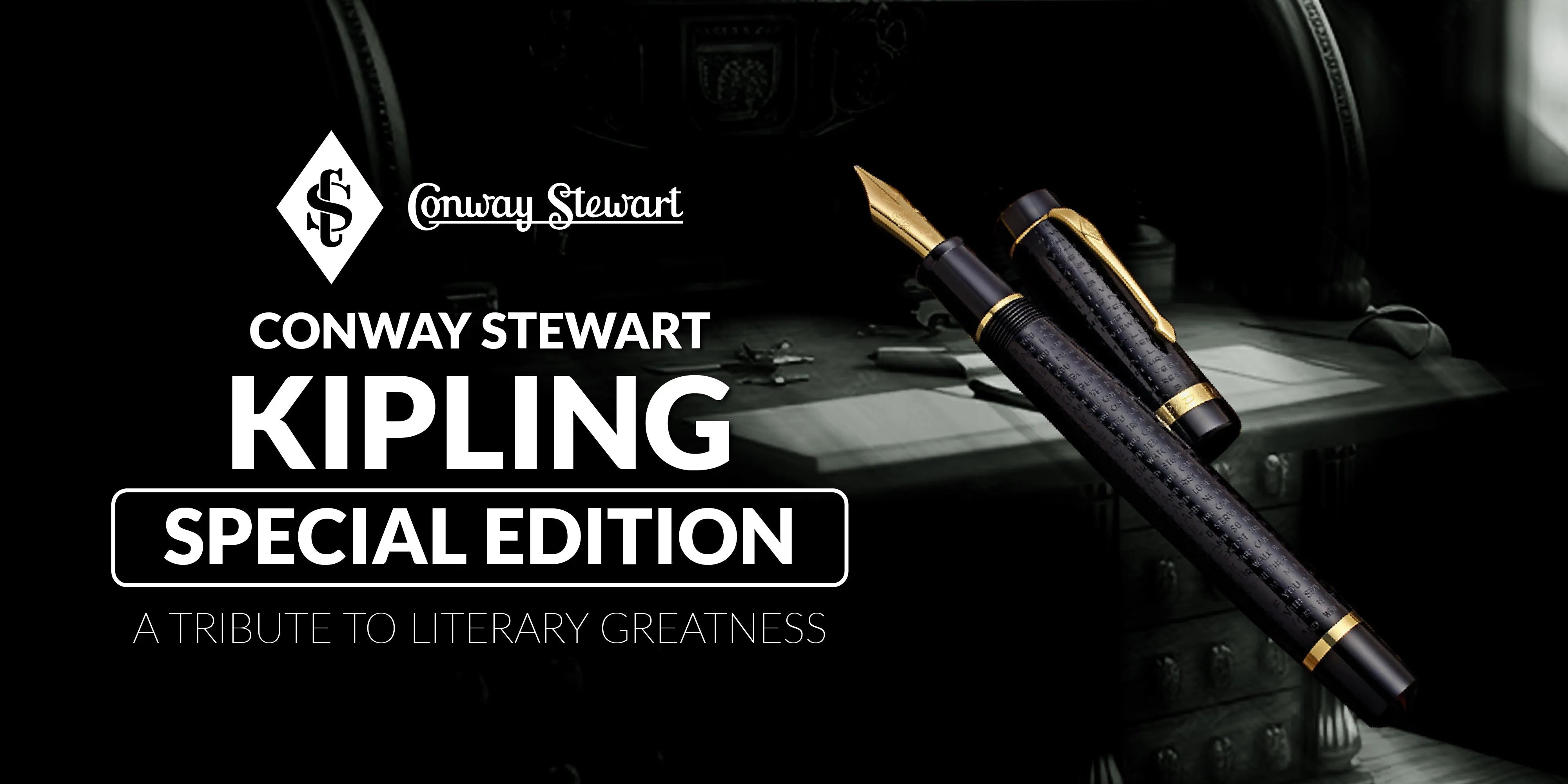
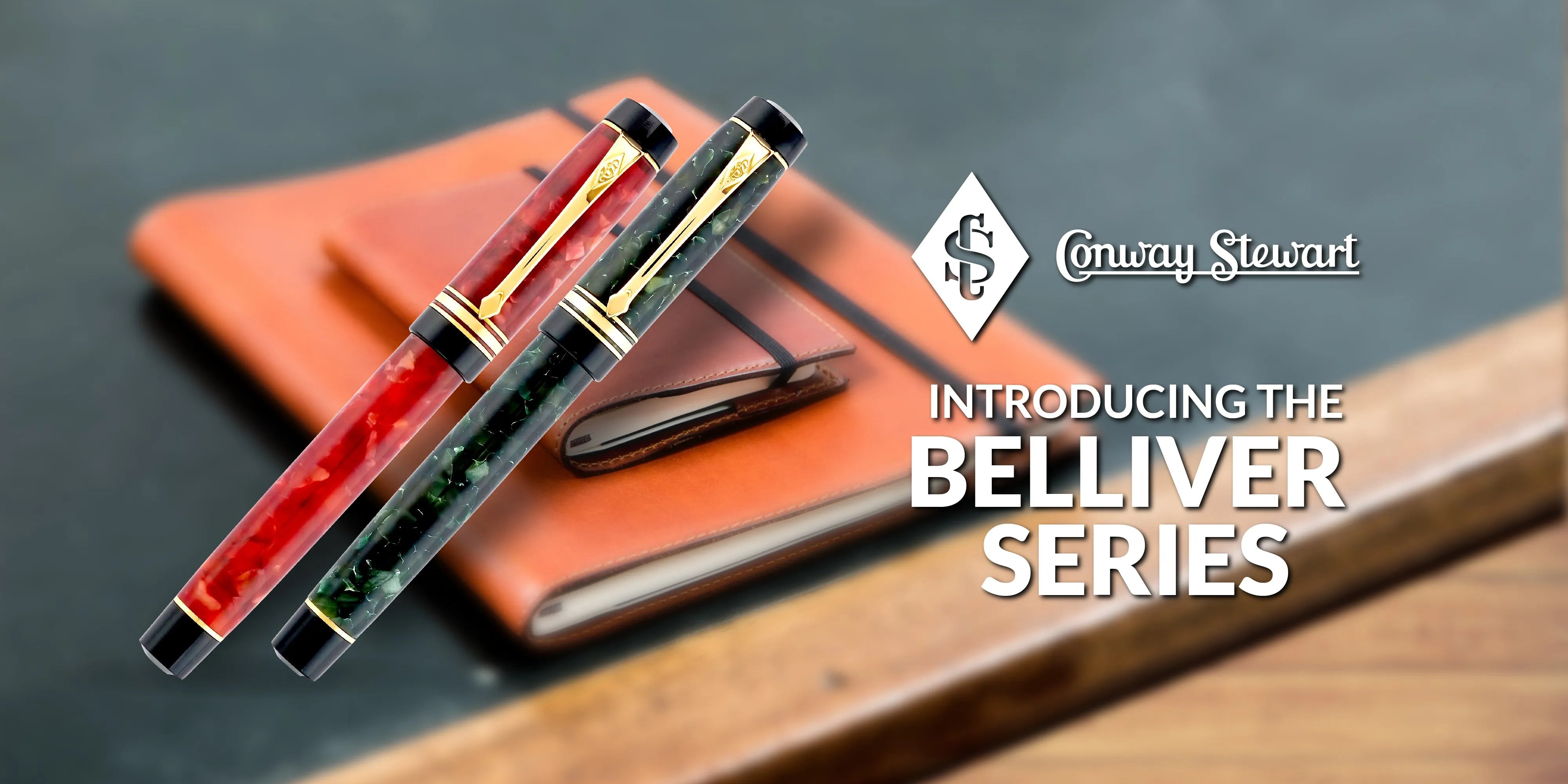
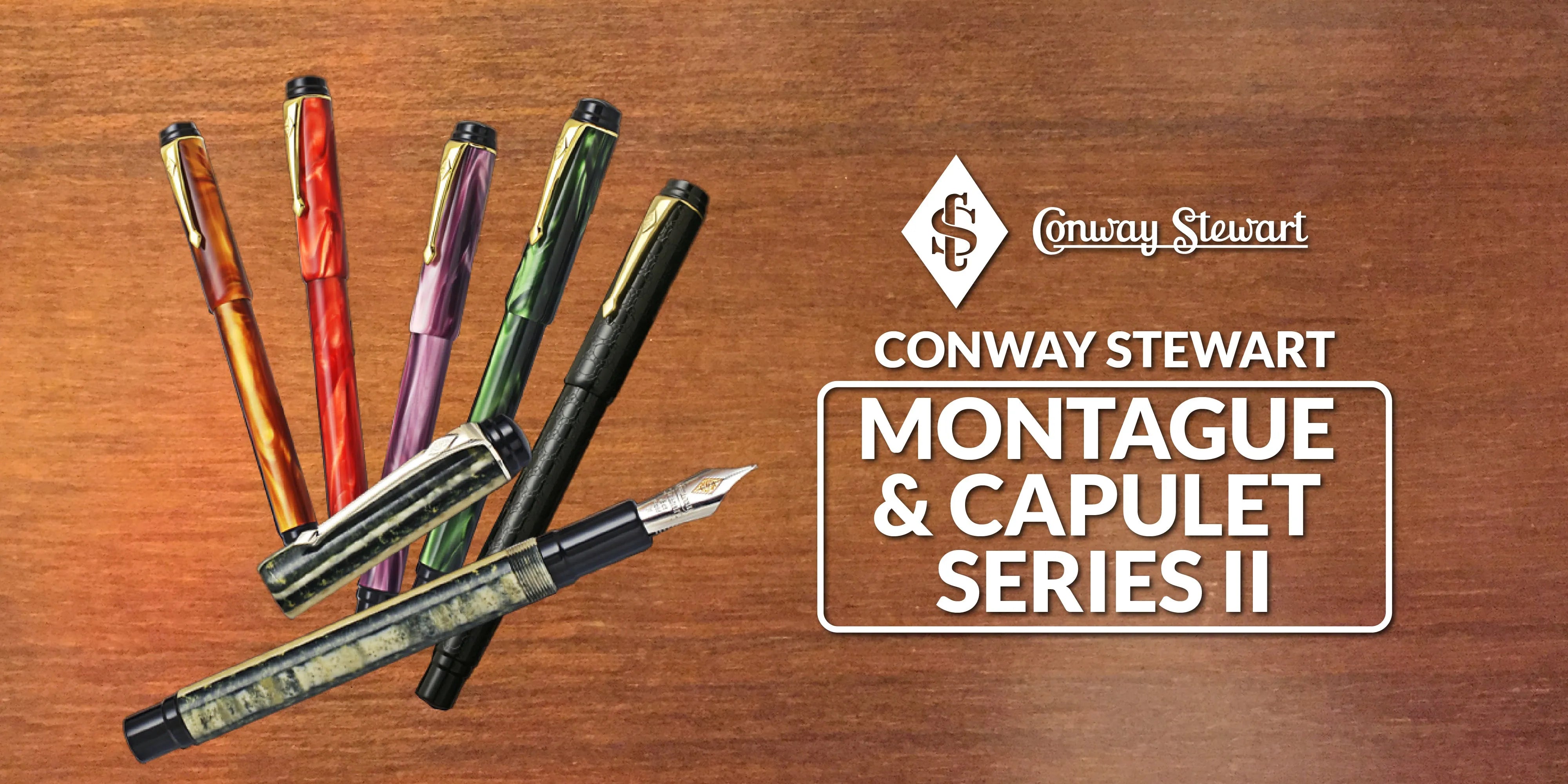
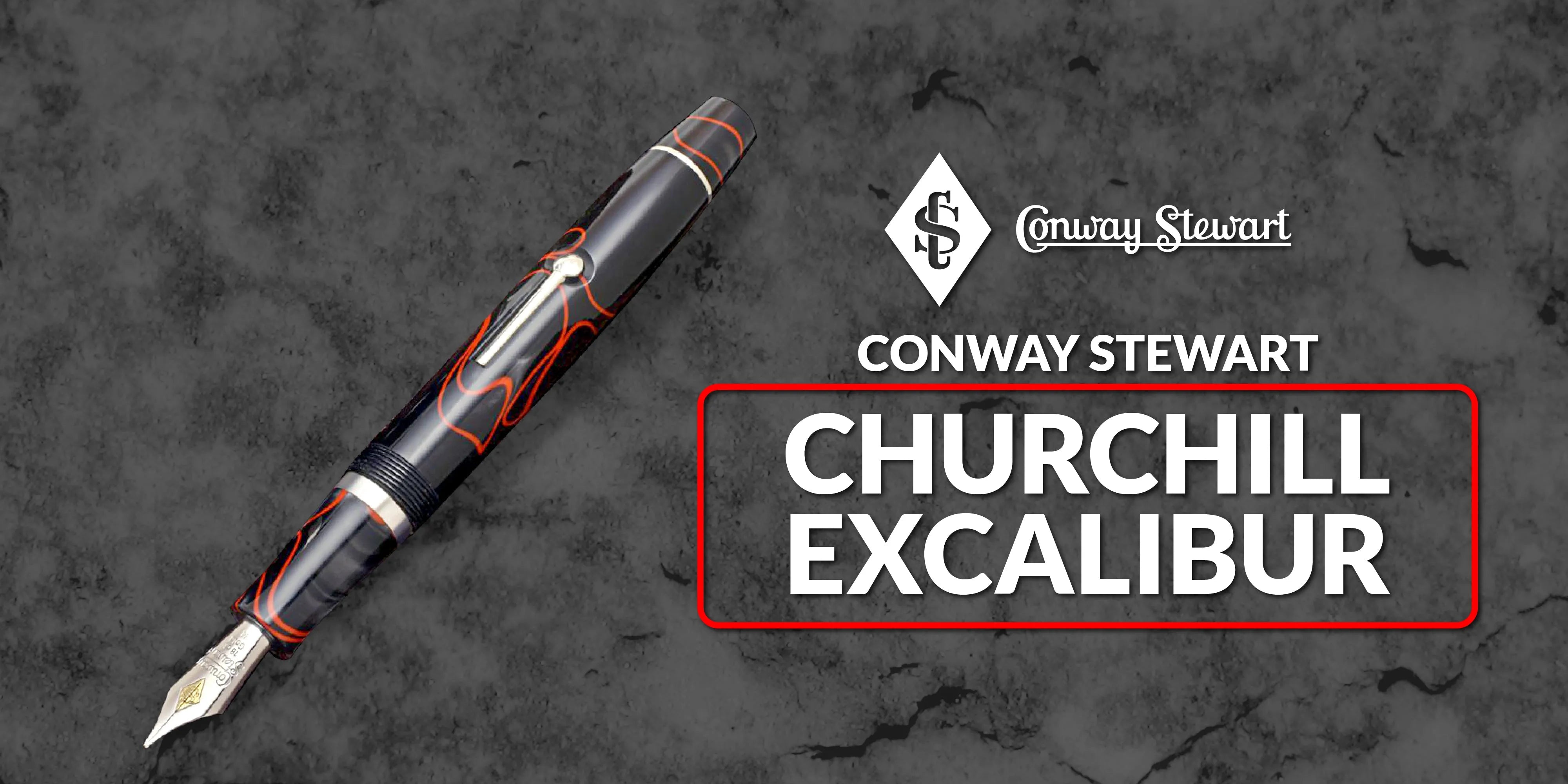
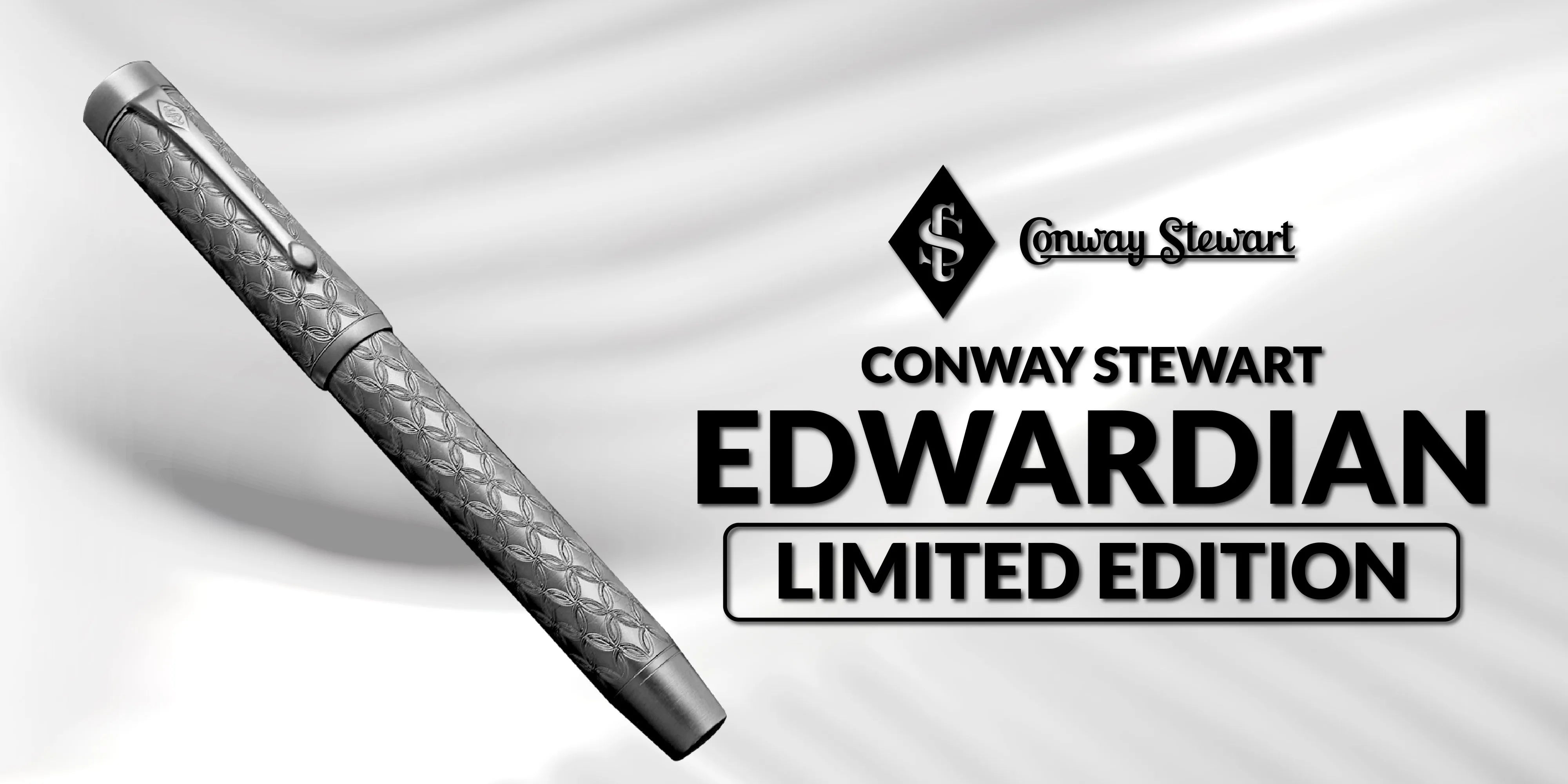

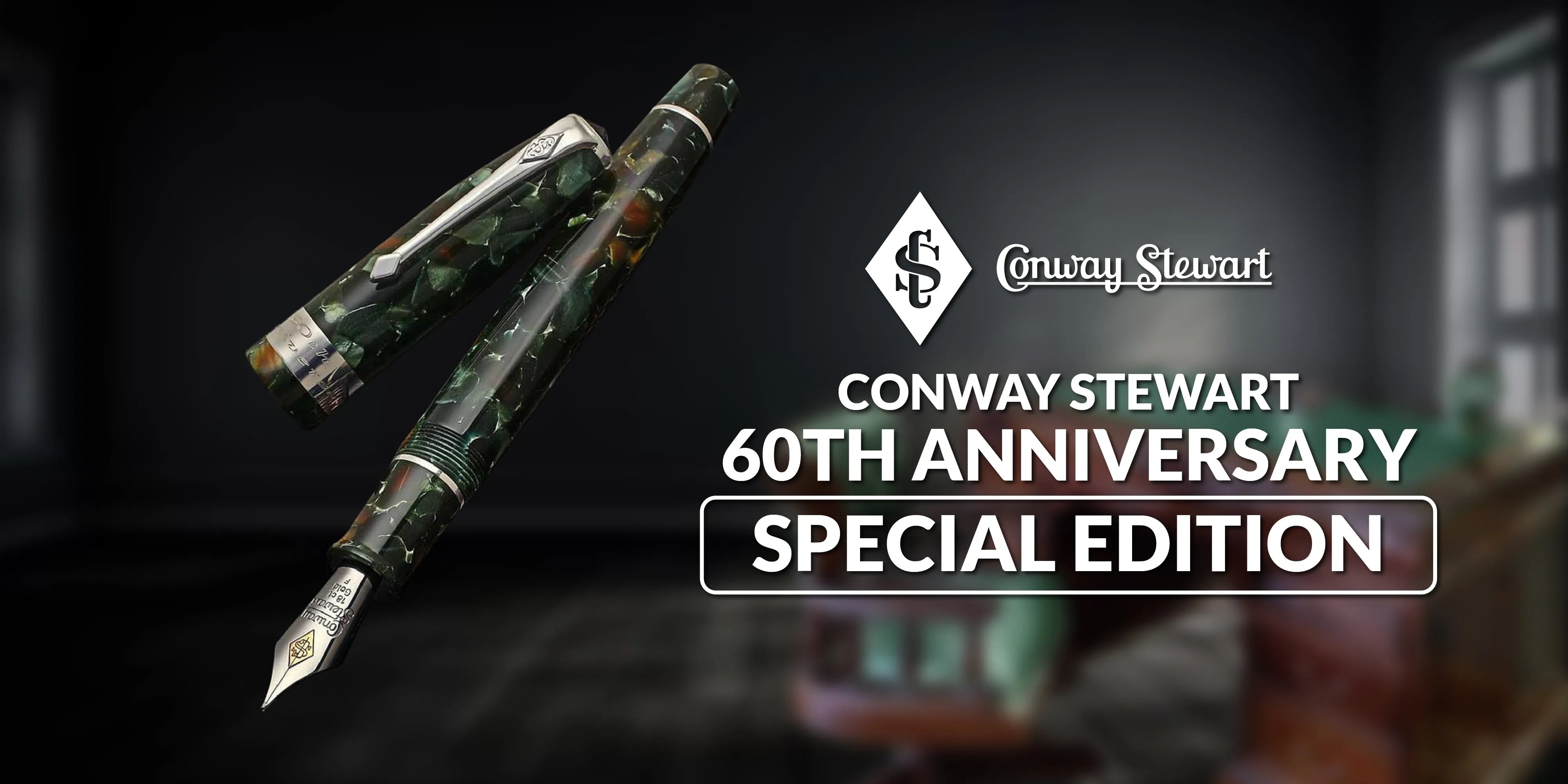
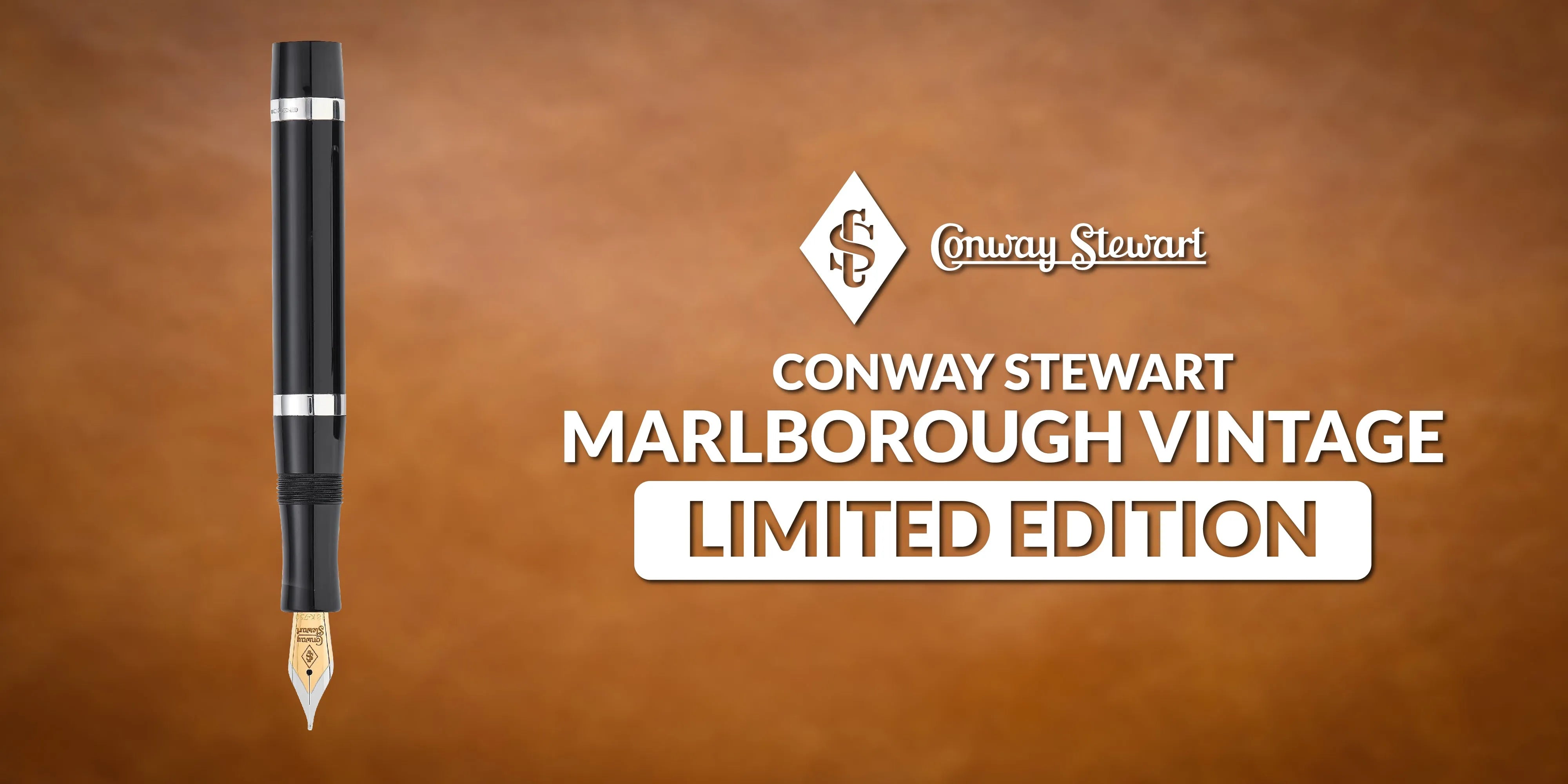
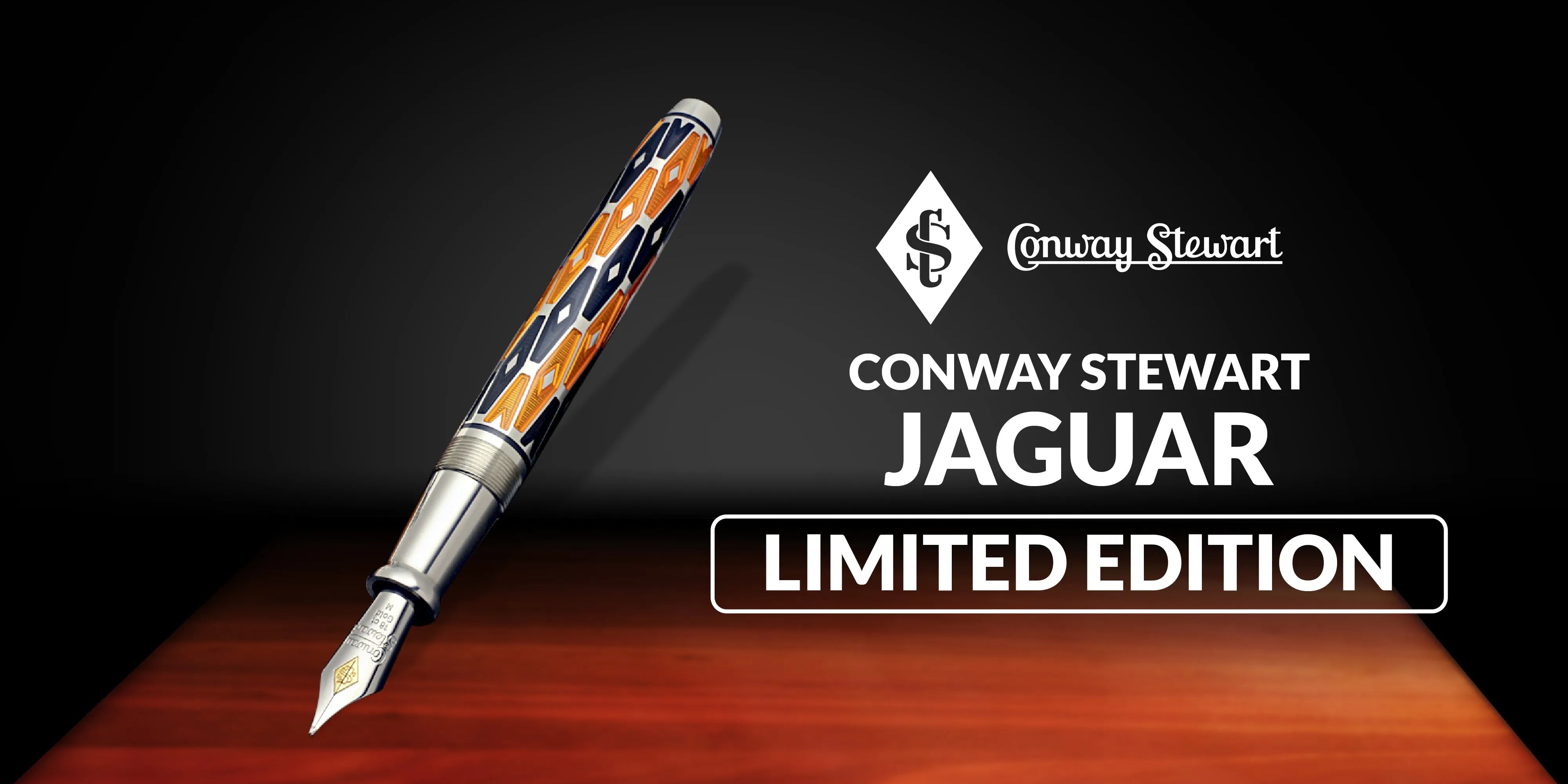
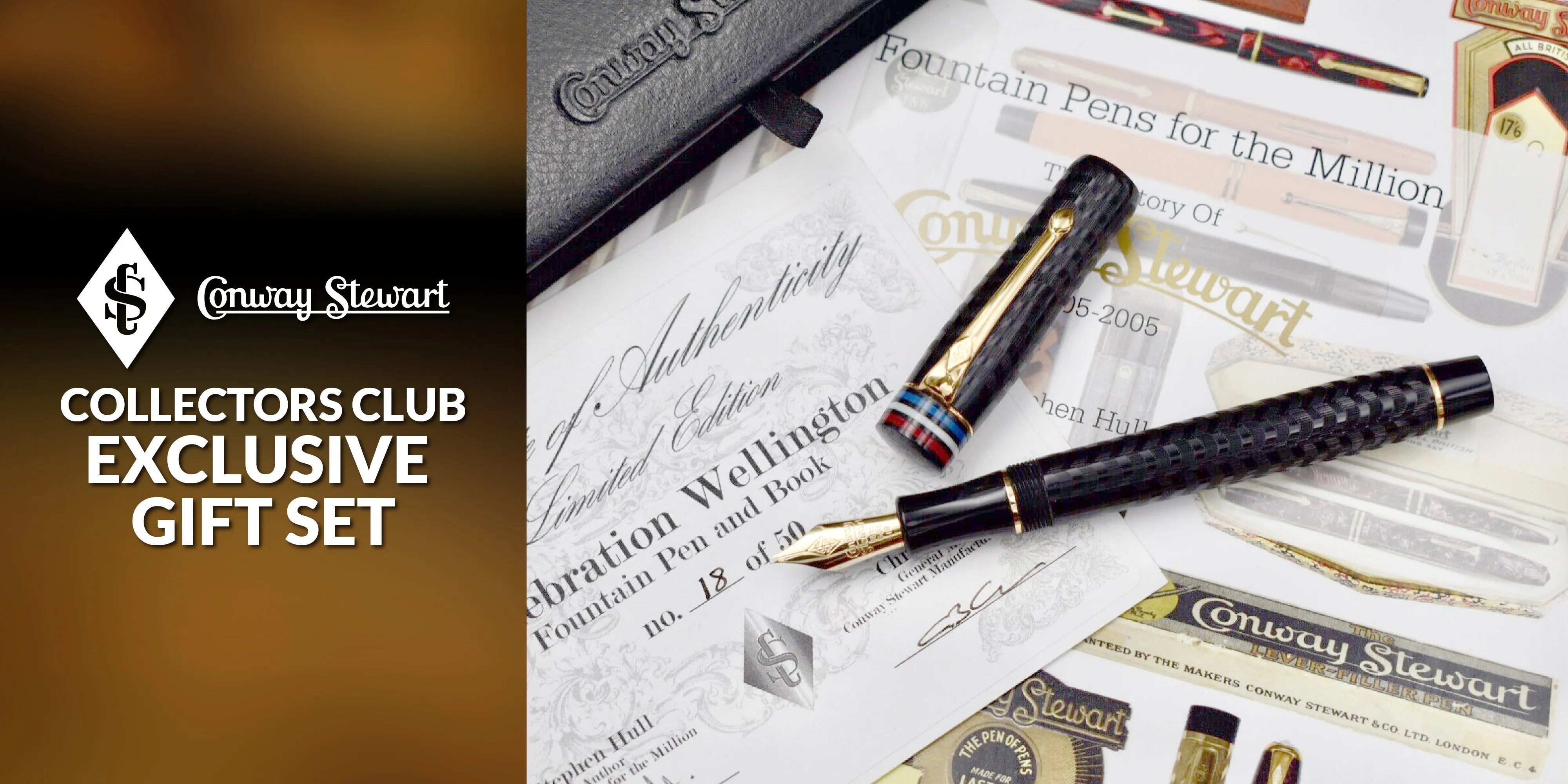
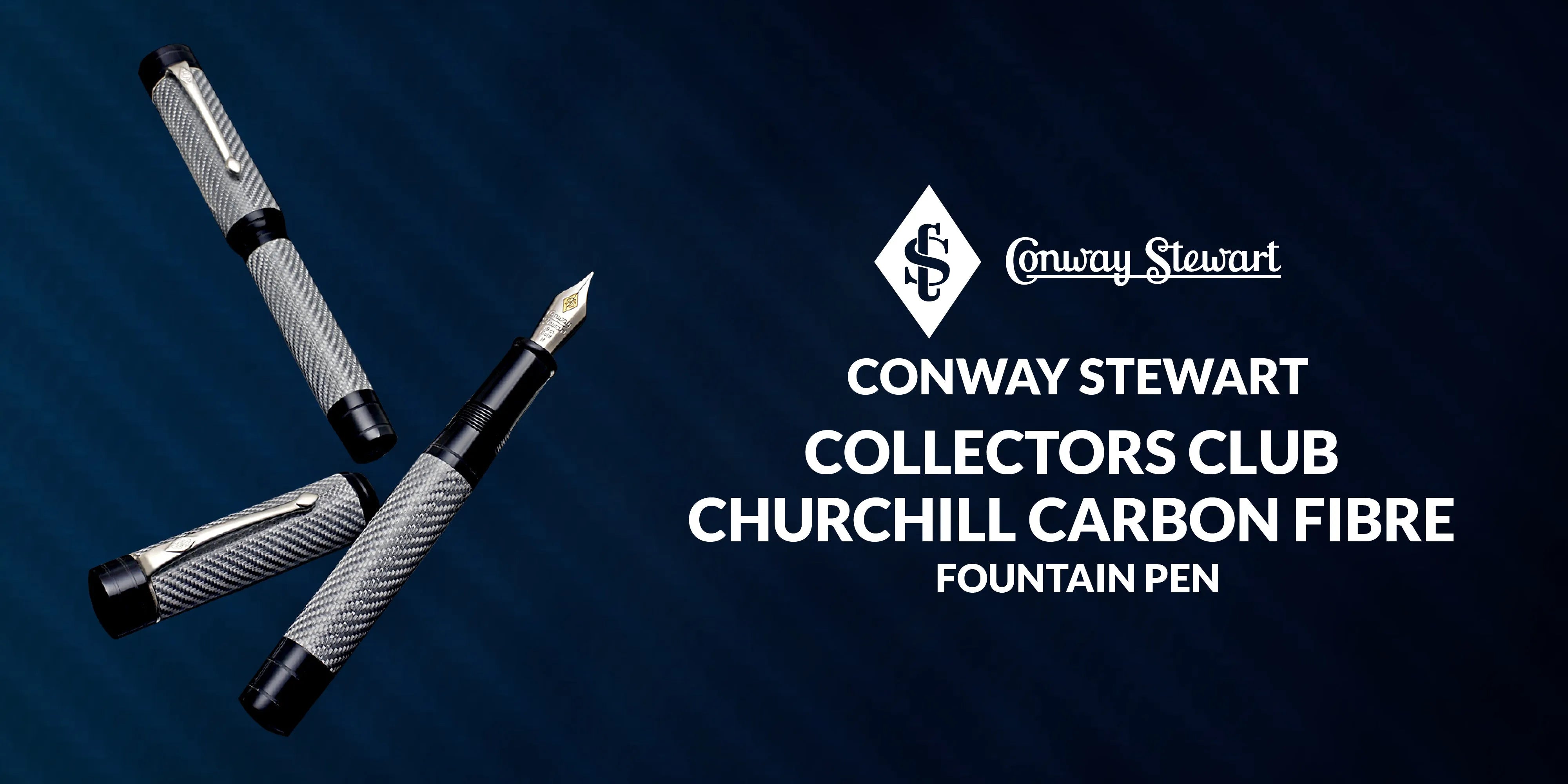
Leave a comment